The Science Discovery Center in Bình Định features a Universe Model House, a Public Astronomy Observatory, and a Science Museum divided into exploration sub-zones: physics, mathematics, life sciences, chemistry, astronomy, and more.
On the afternoon of April 29, the Bình Định Provincial People’s Committee held the inauguration of the Science Space Complex project, the Universe Model House, and the Science Museum (collectively referred to as the Science Discovery Center) in the Quy Hòa Science and Education Urban Area (Ghenh Rang Ward, Quy Nhon City, Bình Định). This is considered the first space science center in Vietnam and the second in Southeast Asia (after Singapore).

Main building of the Science Discovery Center. (Photo: ICISE)
A Place for Public Science Exploration
The Science Discovery Center is invested by the Department of Science and Technology of Bình Định Province, commenced in September 2015, and built on a 4-hectare campus, including two main components: the main building and the Public Astronomy Observatory.
The main building of the Science Space Complex covers 7,200 m2 and includes specialized equipment for popularizing science such as: The Universe Projection House and the Science Exploration Area.
Among them, the Universe Projection House features a 12-meter diameter hemispherical screen with an 80-seat auditorium.
The Universe Projection House utilizes a high-resolution 4K video projection system, modern presentation equipment and controls, projection technology, and simulations of astronomical phenomena and natural events through specially designed films projected onto the dome with impressive audio and visuals, providing audiences with unique and immersive experiences.
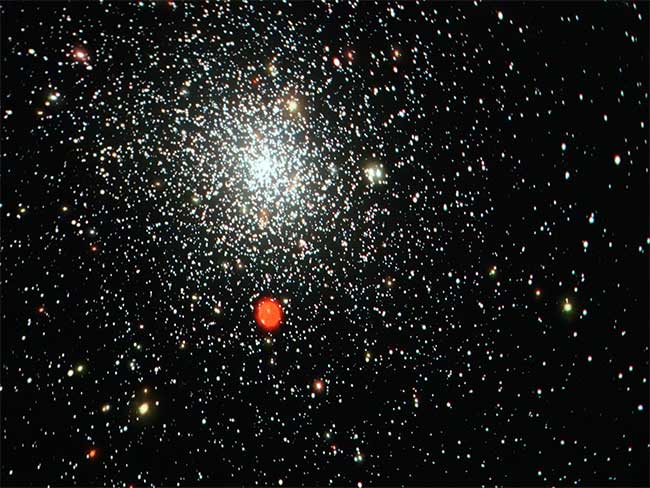
Images of galaxies projected on the dome of the Universe Projection House. (Photo: HOÀNG TRỌNG)
The Science Exploration Area includes diverse exhibition rooms with themes such as: The Solar System, Exploring Matter, Earth and Natural Resources, Space Exploration, Mars Exploration, Learning Through Play, and Why is That…
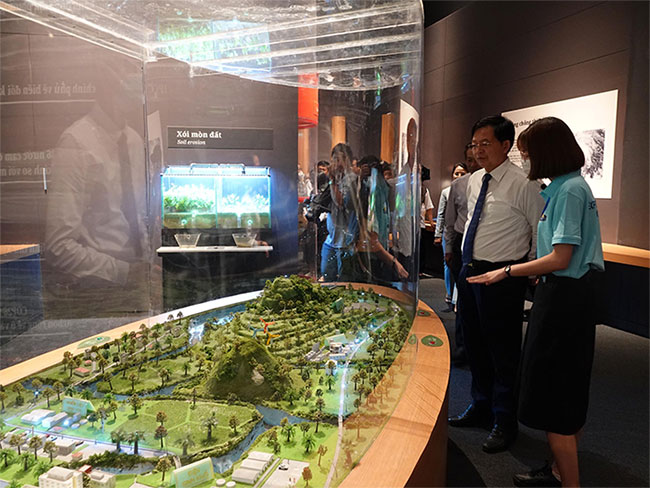
Area for learning about natural resources. (Photo: HOÀNG TRỌNG)
This is a place for the public of all ages to access, practice, experience, and interact with scientific models and advanced technology equipment, participating in creative experiential activities and exploring fascinating scientific knowledge explained in the simplest ways with the motto “learning through play, playing to learn.”
Through this, it aims to inspire and encourage a passion for scientific research through basic science experiments and discussions between researchers and the public, especially children, students, and youth.
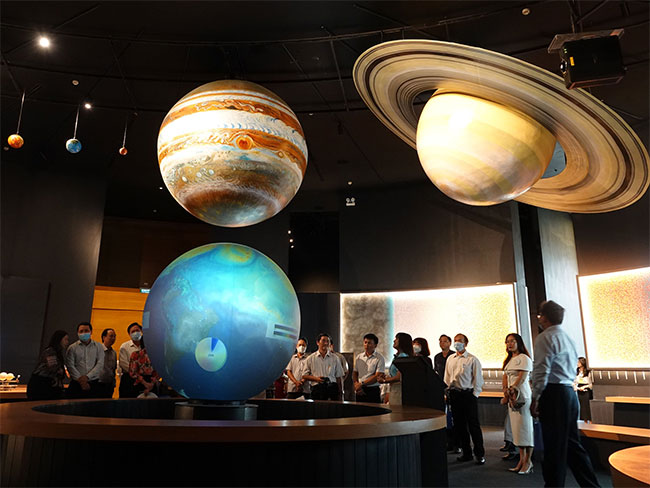
Visitors exploring the solar system model at the Science Discovery Center. (Photo: HOÀNG TRỌNG)
The Public Astronomy Observatory features a 60 cm diameter optical telescope (the largest telescope currently in Vietnam). In addition to the main telescope, the observatory also includes other common telescopes and supporting equipment to observe the planets of the solar system and galaxies.
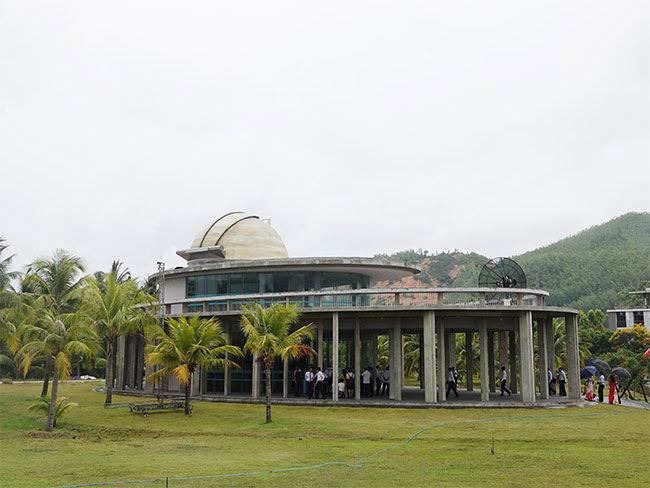
Telecommunication astronomy observatory at the Science Discovery Center. (Photo: HOÀNG TRỌNG)
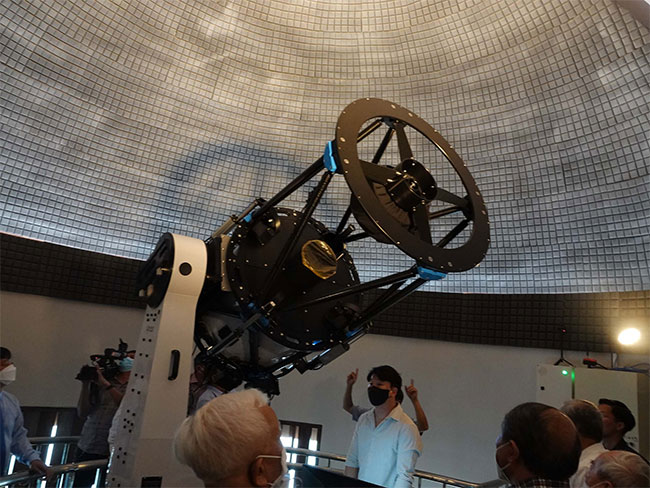
Telescope at the Public Astronomy Observatory. (Photo: HOÀNG TRỌNG)
The Science Discovery Center also includes a Children’s Area, which began construction in December 2021 and is expected to be completed by October 2022. This area is anticipated to be a space for children to experience scientific knowledge in the most intimate way.
Thanks to Professor Trần Thanh Vân, a Persistent Seed Planter for Vietnamese Science
Speaking at the ceremony, Mr. Lâm Hải Giang, Vice Chairman of the Bình Định Provincial People’s Committee, stated that the initial idea for the “Science Space Complex” project was proposed by the Vietnam Meeting Association. The project also received positive support from central ministries and the determination of the Bình Định Provincial People’s Committee.
On behalf of the Bình Định Provincial People’s Committee, Mr. Lâm Hải Giang expressed gratitude to Professor Trần Thanh Vân, Chairman of the Vietnam Meeting Association, who is very passionate and has made significant contributions to the project, being a persistent seed planter for Vietnamese science in general and the scientific development of Bình Định Province in particular.
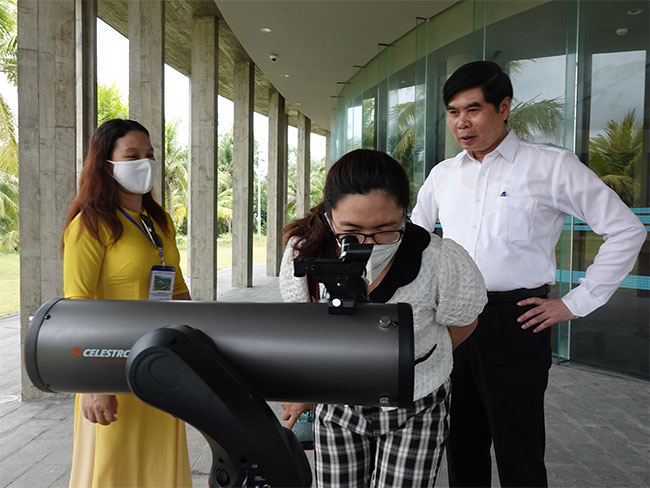
Visitors experiencing common telescopes at the Astronomy Observatory. (Photo: HOÀNG TRỌNG)
“Professor Trần Thanh Vân has made Bình Định a meeting place for leading scientists from around the world and Vietnam with scientific conferences and workshops aimed at capturing pioneering ideas. From there, outstanding projects inspire and convey messages to the younger generation of Vietnamese scientists and managers, opening a door to connect with the world and encourage development. This is a key factor for progress, a condition, and an opportunity to leapfrog and develop sustainably in the present and future,” emphasized Mr. Lâm Hải Giang.
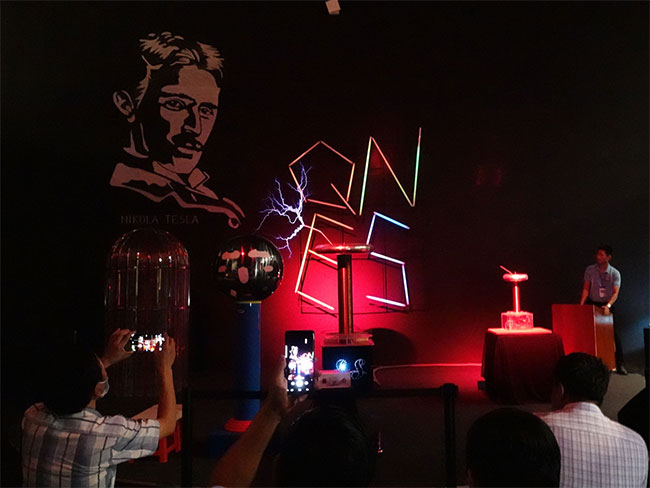
Experiments on electric sparks, thunder, etc., at the Science Discovery Center. (Photo: HOÀNG TRỌNG)
According to Mr. Lâm Hải Giang, the operation of the Science Discovery Center, along with the International Center for Interdisciplinary Science and Education, TMA Innovation Park, and others, will provide additional momentum to realize the dream of building the Quy Hòa Science and Education Urban Area.
The Need for Skilled Experts to Operate
According to Professor Trần Thanh Vân, Chairman of the Vietnam Meeting Association, the Science Discovery Center project at any time needs the connection and support of international experts in operations to enrich and enhance activities for the project. The Science Discovery Center needs skilled experts to design exhibition scientific models based on scientists’ ideas and repair them as needed. This is essential experience in operations to reduce and save costs.
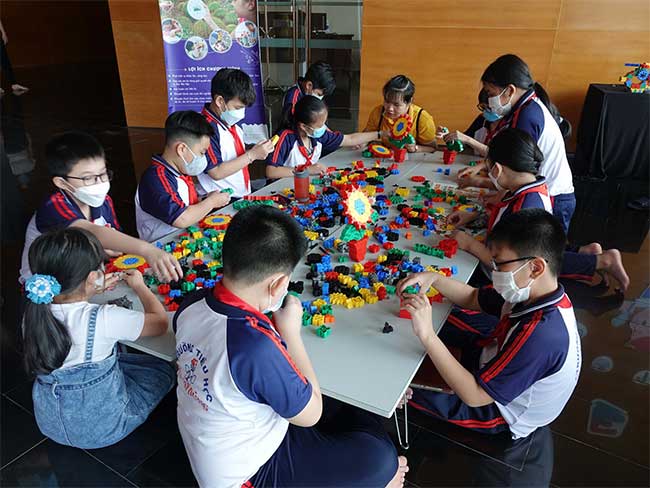
Children playing at the Science Discovery Center. (Photo: HOÀNG TRỌNG)
Professor Trần Thanh Vân hopes that the leaders of Bình Định Province, the Government, and central ministries will create favorable conditions in terms of mechanisms, policies, and finances so that the Science Discovery Center can attract talented human resources who are passionate about spreading the love of science to students and the public. Each year, the state needs to allocate a budget to support the activities of the Science Discovery Center to prevent it from having to prioritize economic activities to survive, which would limit access opportunities for underprivileged students.


















































